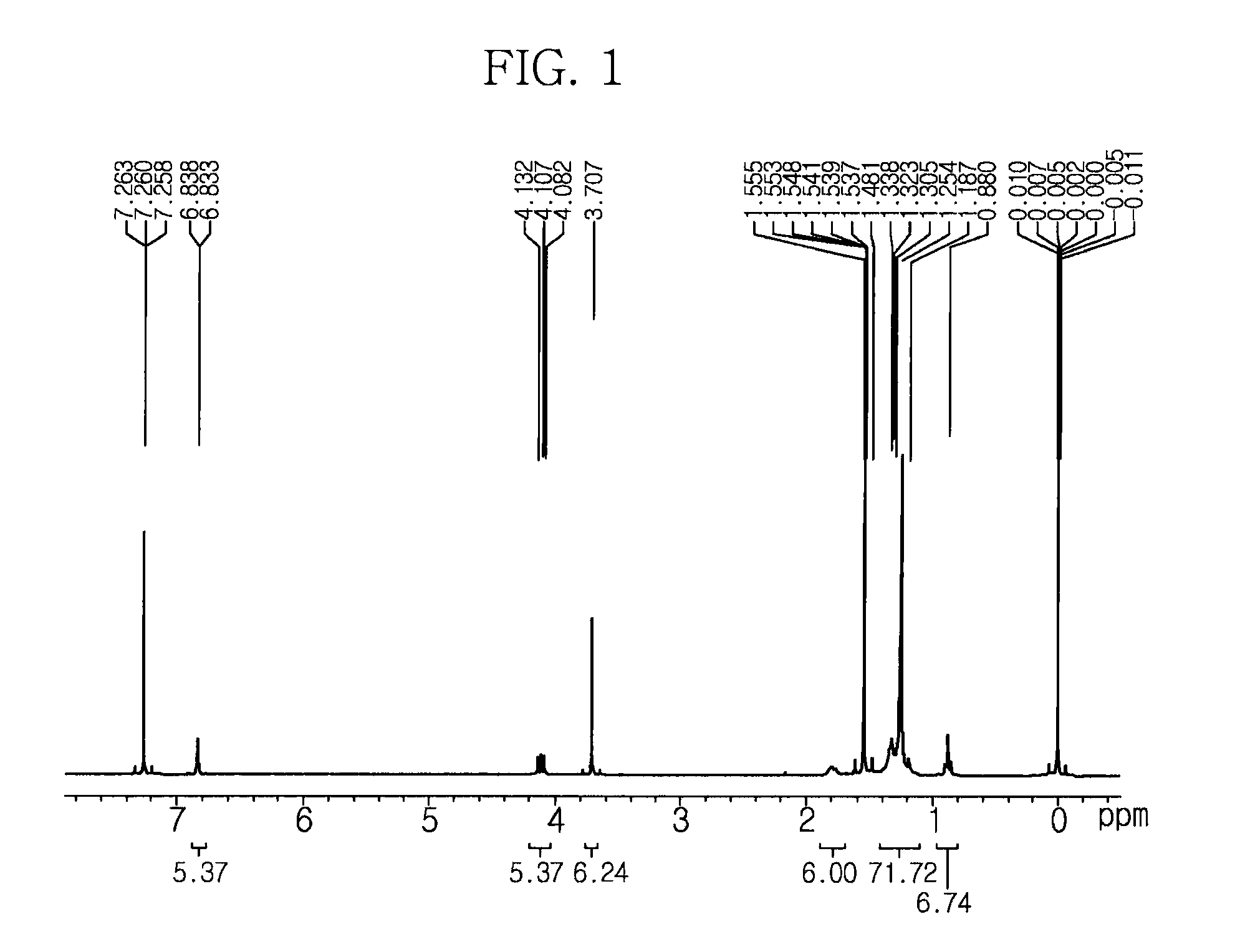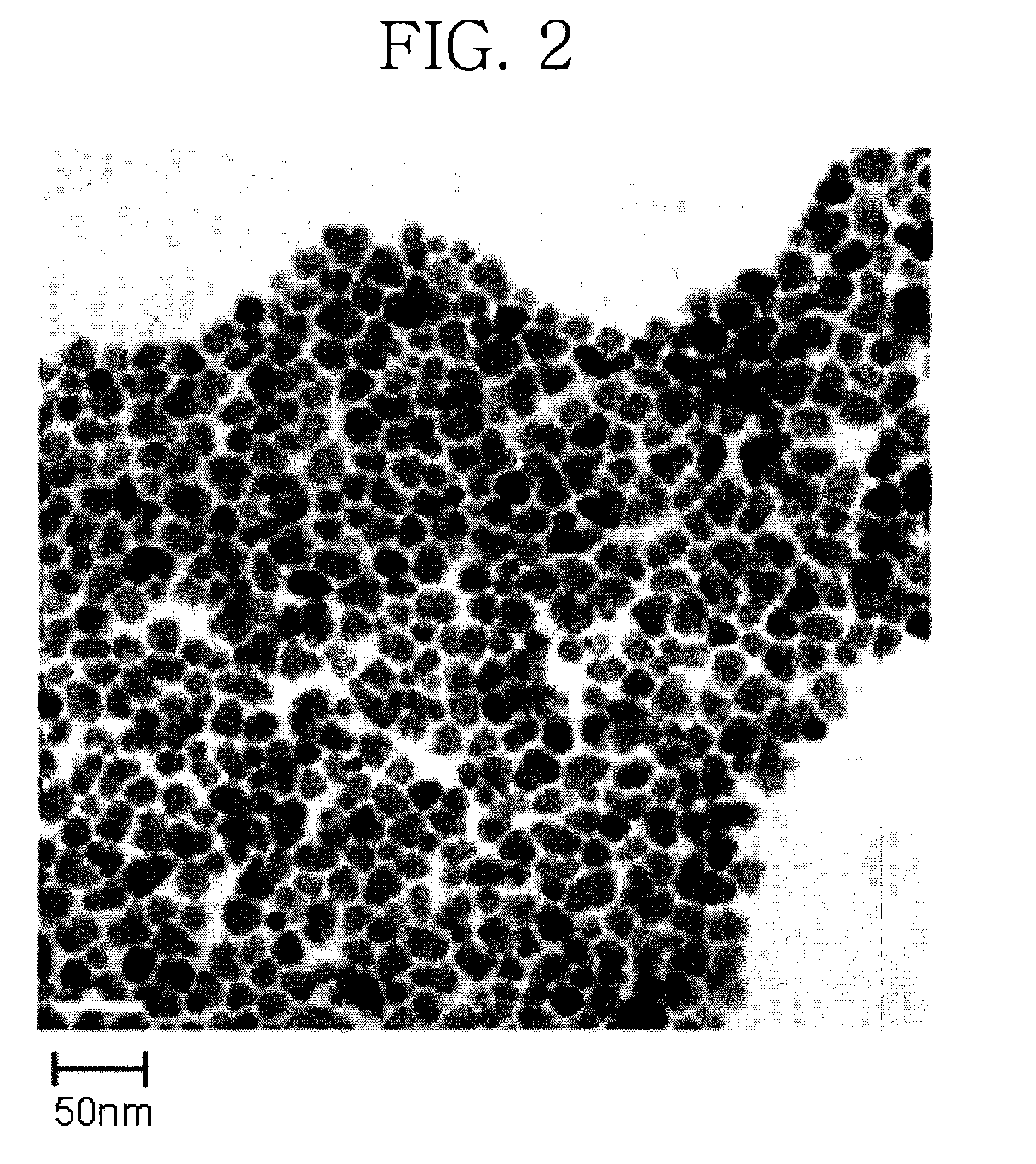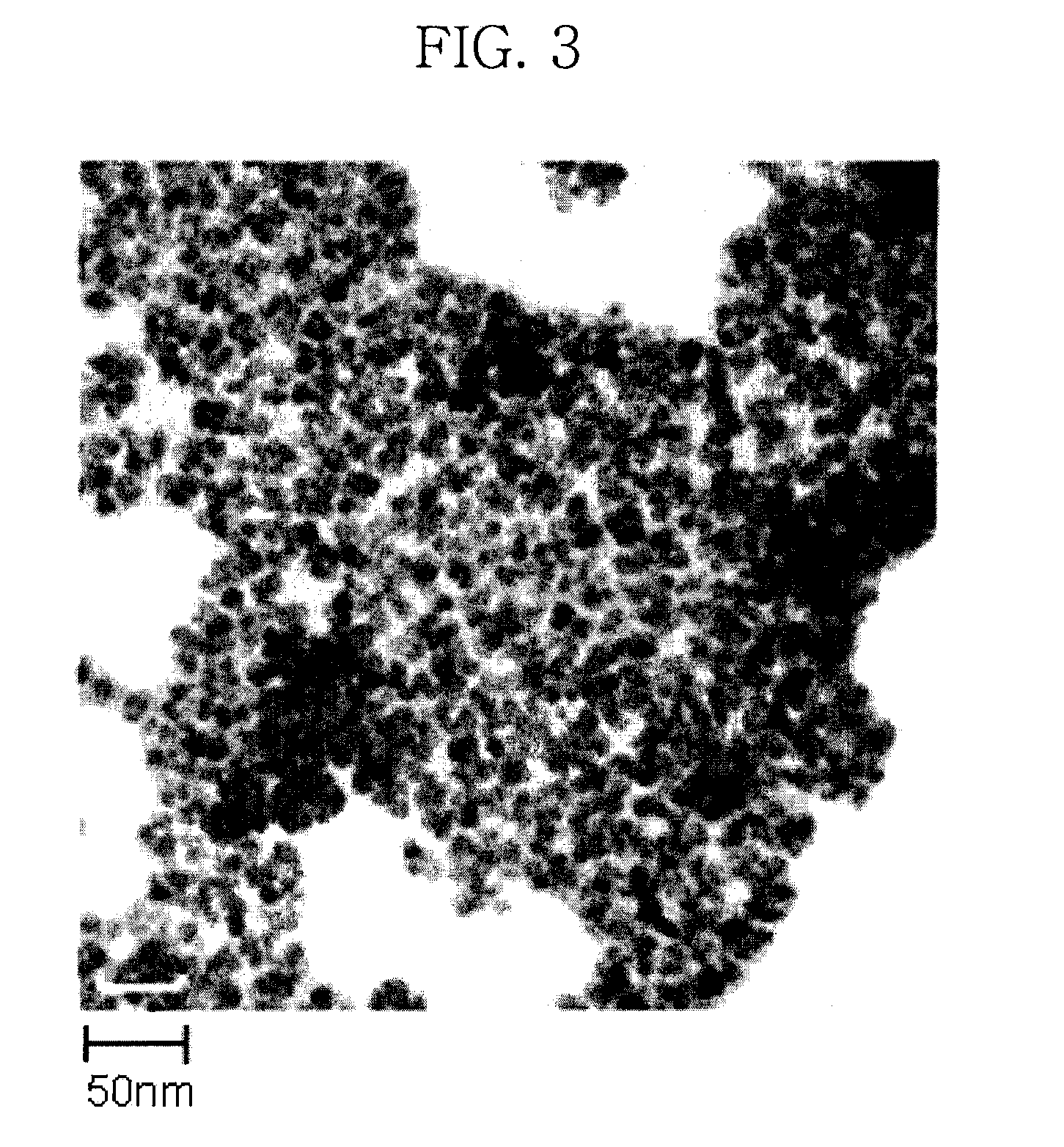Method for preparing nanoparticles using carbene derivatives
a carbene derivative and nanoparticle technology, applied in the direction of sulfur compounds, conductive materials, germanium dioxide, etc., can solve the problems of limiting the types of precursors used to efficiently synthesize nanoparticles, and achieve the effect of efficient control of the size, shape, structure and uniformity of the nanoparticles
- Summary
- Abstract
- Description
- Claims
- Application Information
AI Technical Summary
Benefits of technology
Problems solved by technology
Method used
Image
Examples
preparation example 1
Synthesis of Se Carbene Precursor
[0079]Hexadecylmethylimidazolium iodide (3 g, 6.91 mmol) and potassium carbonate (K2CO3, 4.77 g, 34.51 mmol) were added to 50 mL of methanol and were then refluxed. Selenium (1.64 g, 20.72 mmol) was added thereto and refluxed at ambient temperature for about 12 hours. The remaining K2CO3 and Se were removed using a glass filter, the methanol was removed using an evaporator, and then extracted with dichloromethane / sodium bicarbonate (NaHCO3). The dichloromethane layer was dried over MgSO4 and separated by column chromatography employing hexane / ether (4:1) as an eluent to yield 1-hexadecyl-3-methyl-4-imidazoline-2-selone. The NMR spectrum of this compound is shown in FIG. 1.
[0080]1H NMR (CDCl3, 300 MHz): δ 6.88 (brs, 2H), 4.10 (t, J=7.5 Hz, 2H), 3.71 (3H, s), 1.80 (q, J=7.2 Hz, 2H), 1.25 (m, 28H), 0.88 (t, J=6.9 Hz, 3H) ppm.
example 1
Synthesis of ZnSe Nanoparticles
[0081]50 mg of zinc acetate, 1 mL of oleic acid, 7 mL of octadecene (hereinafter, referred to as an “ODE”) and 1.05 g of the 1-hexadecyl-3-methyl-4-imidazoline-2-selone prepared in Preparation Example 1 were charged in a round bottom flask equipped with a reflux condenser and the reaction temperature was adjusted to about 300° C. with stirring.
[0082]After completion of the reaction, the reaction mixture was cooled to ambient temperature as rapidly as possible, ethanol as a non-solvent was added thereto and the resulting mixture was subjected to centrifugation. The supernatant of the solution was decanted and discarded, leaving the centrifuged precipitate. The resulting precipitate was dispersed in toluene to prepare a dispersion solution of ZnSe nanocrystals (about 50 mg). The diameter of nanoparticles thus synthesized was 16.9 nm. The transmission electron micrograph (TEM) of the nanoparticles was obtained and shown in FIG. 2. As can be seen from FIG....
example 2
Synthesis of ZnSe Nanoparticles
[0083]1.05 g of the 1-hexadecyl-3-methyl-4-imidazoline-2-selone synthesized in Preparation Example 1 was dissolved in 7 mL of ODE, the solution was heated to about 270° C., a solution of 50 mg of zinc acetate dissolved in 1 mL of oleic acid was rapidly added thereto and allowed to react for one hour.
[0084]After the reaction was completed, the reaction mixture was cooled to ambient temperature as rapidly as possible, ethanol as a non-solvent was added thereto, and the resulting mixture was centrifuged. The supernatant of the solution was decanted and discarded, leaving the centrifuged precipitate. The obtained precipitate was dispersed in toluene to prepare a dispersion solution of ZnSe nanocrystals (about 50 mg). Nanoparticles thus synthesized had a diameter of 12.1 nm. The transmission electron micrograph (TEM) of the nanoparticles was obtained and is shown in FIG. 3.
PUM
| Property | Measurement | Unit |
|---|---|---|
| temperature | aaaaa | aaaaa |
| reaction time | aaaaa | aaaaa |
| diameter | aaaaa | aaaaa |
Abstract
Description
Claims
Application Information
 Login to View More
Login to View More - R&D
- Intellectual Property
- Life Sciences
- Materials
- Tech Scout
- Unparalleled Data Quality
- Higher Quality Content
- 60% Fewer Hallucinations
Browse by: Latest US Patents, China's latest patents, Technical Efficacy Thesaurus, Application Domain, Technology Topic, Popular Technical Reports.
© 2025 PatSnap. All rights reserved.Legal|Privacy policy|Modern Slavery Act Transparency Statement|Sitemap|About US| Contact US: help@patsnap.com



